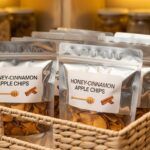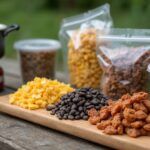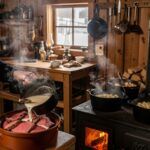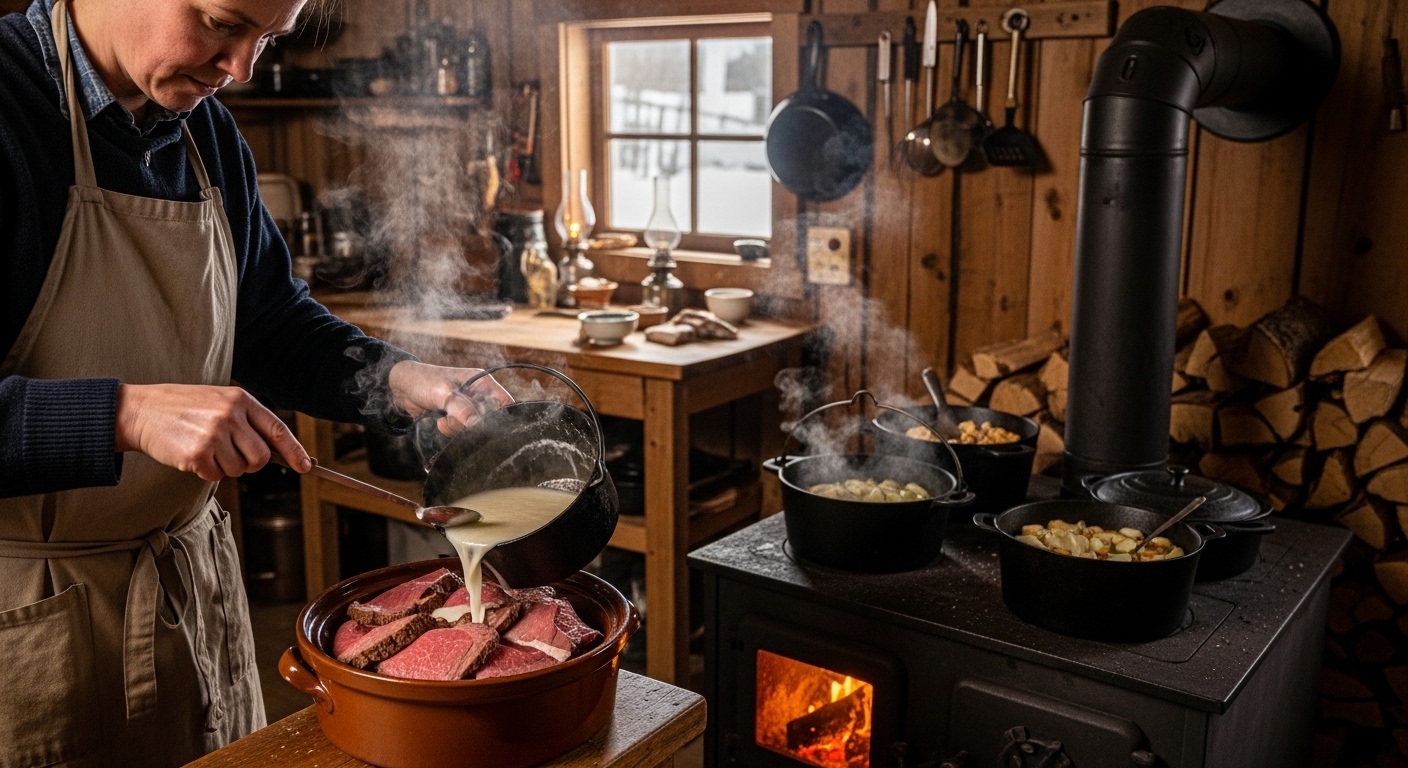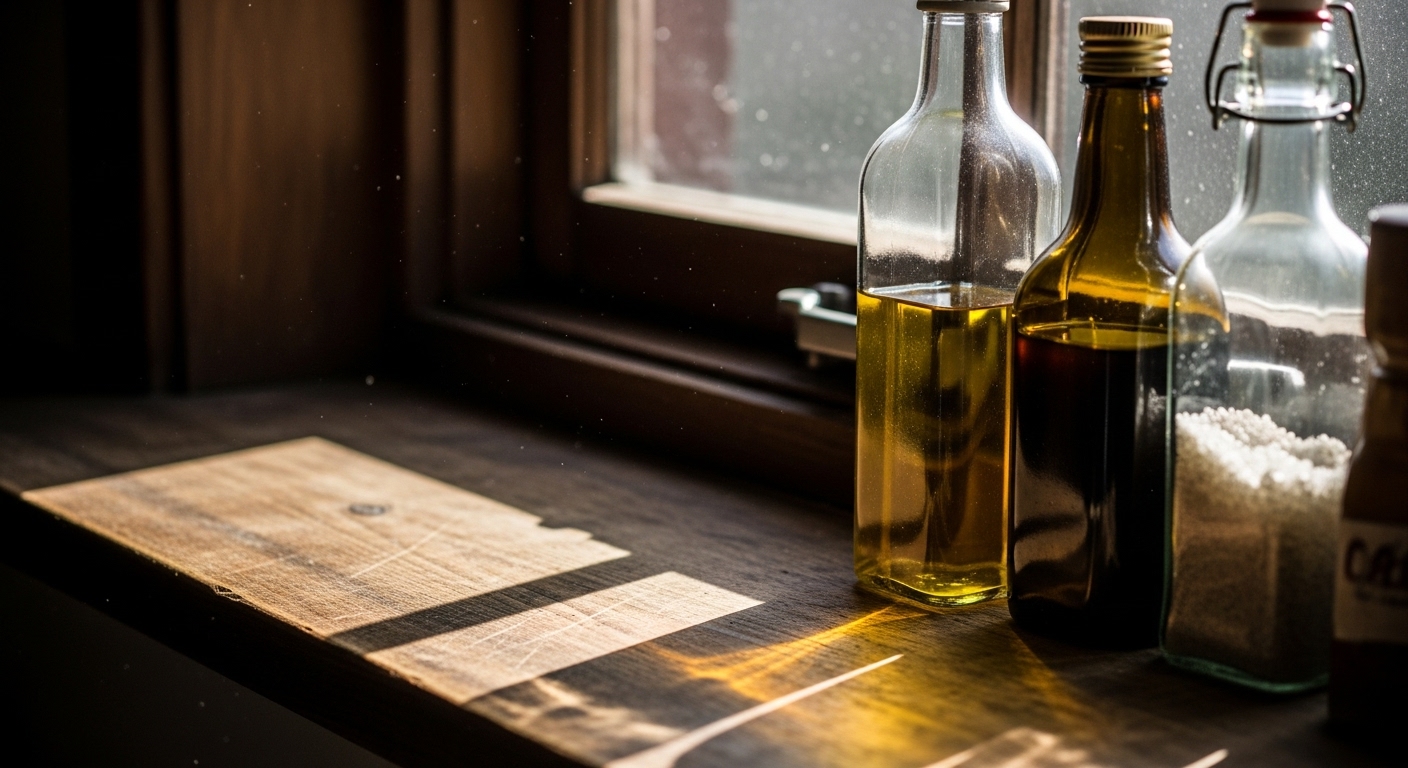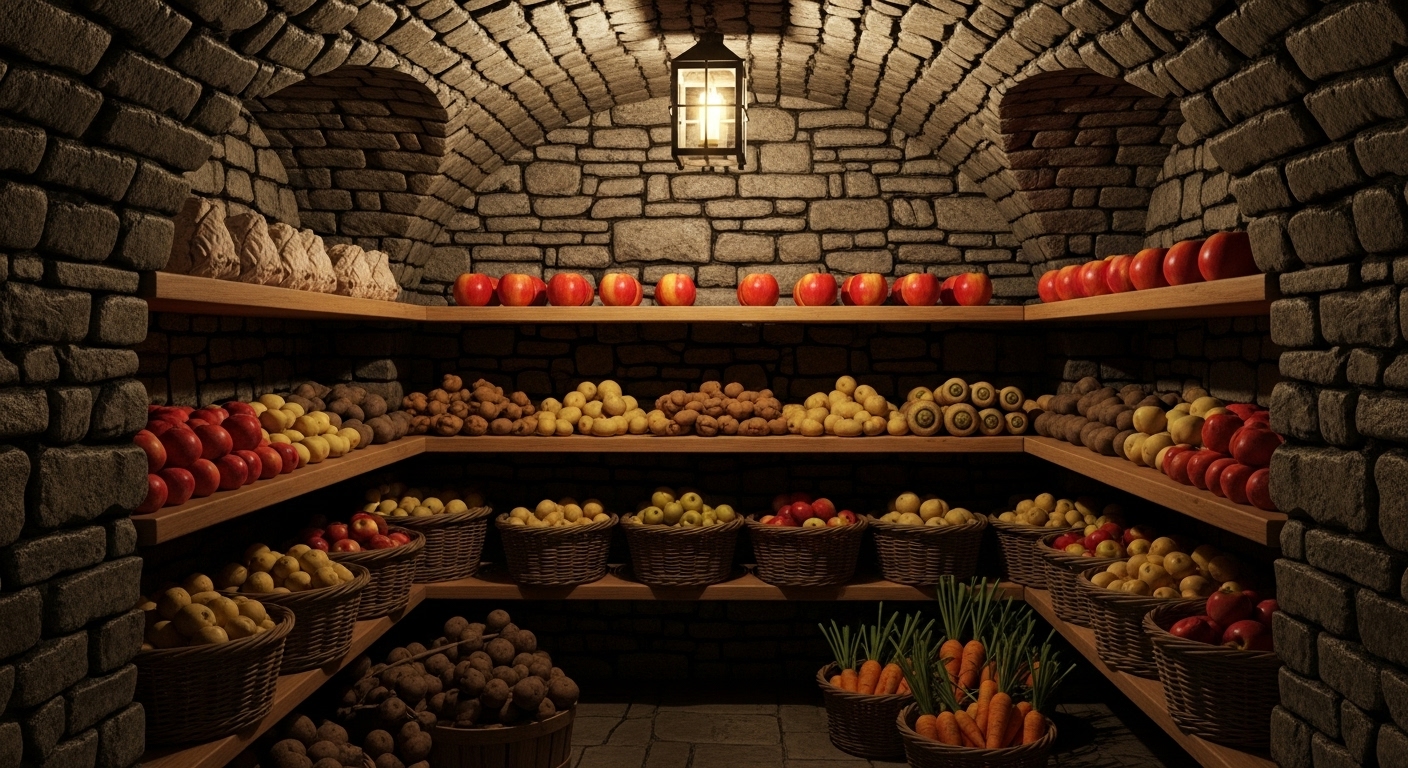Before refrigeration or canning, ancient people learned that fat could act as a natural sealant and preservative. By cooking meat in its own fat and sealing it beneath the surface, they created a protective barrier against air and bacteria. This time-tested method kept food fresh for months—even years—and is still celebrated today in both traditional and modern kitchens.

The Power of Fat in Food Preservation
Fat excludes oxygen, preventing the growth of spoilage bacteria and mold. When properly prepared, foods stored in fat remain moist, flavorful, and safe to eat long after cooking. This preservation technique was independently developed by many cultures around the world, proving just how effective and universal it truly is.
French Confit: Preserving with Elegance
The French perfected this art through duck confit—a slow-cooked delicacy that was once a necessity. Duck or goose legs were cooked gently in their own rendered fat, then packed into earthenware crocks and stored in cool cellars. As long as the fat layer stayed intact, the meat could last for months.
Today, confit remains a symbol of traditional cuisine, merging preservation with flavor and refinement.
🦆 Recipe: Traditional Duck Confit
Ingredients
- 4 duck legs
- 1 tbsp sea salt
- 1 tsp black pepper
- 2 sprigs thyme
- 2 cloves garlic, smashed
- Duck fat (enough to cover)
Instructions
- Rub duck legs with salt, pepper, and thyme. Refrigerate overnight.
- Rinse, pat dry, and place in a pot with garlic and melted fat.
- Simmer at low heat (200°F/95°C) for 2–3 hours.
- Transfer meat to jars, pour fat over to seal, and cool.
- Store in a cool cellar or fridge for up to 3 months.
Pemmican: Survival Food of the North
In North America, Indigenous peoples mastered the art of survival through pemmican—a high-energy blend of dried meat, melted tallow, and dried berries. Compact, nutritious, and nearly indestructible, pemmican was used by Cree, Métis, and Plains nations for centuries.
It was later adopted by fur traders and explorers who needed lightweight, long-lasting food on long journeys.
🫐 Recipe: Traditional Pemmican
Ingredients
- 2 cups dried lean meat (bison, venison, or beef)
- 1 cup rendered tallow
- ½ cup dried berries (saskatoon, cranberry, or blueberry)
- Pinch of salt
Instructions
- Grind dried meat into fine shreds.
- Combine with crushed berries in a bowl.
- Pour warm tallow over mixture and stir until evenly coated.
- Press into small cakes or balls and let cool.
- Store in airtight containers; lasts up to 1 year in a cool place.
Ghee, Lard, and Tallow Across Cultures
In the Middle East, clarified butter known as ghee was prized for its longevity. In Europe, lard sealed cooked meats and potted fish. In colder climates, tallow was used to preserve roasted meats and create nutrient-dense foods.
Each variation followed the same principle—cook, cover in fat, and keep cool. These methods linked generations of cooks through the same simple truth: fat preserves life.
🍖 Recipe: Tallow-Sealed Roast Beef
Ingredients
- 2 lbs roast beef
- 2 tbsp coarse salt
- 1 tbsp pepper
- 1 cup rendered beef tallow
Instructions
- Season beef with salt and pepper, roast until tender.
- Place meat in a clean crock or jar.
- Pour hot, melted tallow over to cover completely.
- Seal with a lid and store in a cool cellar.
- Keeps for months if sealed and cool.
Other Fat Preservation Recipes
🐑 1. Lamb Confit with Rosemary and Garlic
Cook lamb chunks in rendered fat with herbs and garlic; seal in jars under the fat for a rich, preserved dish.
🧈 2. Ghee-Sealed Vegetables
Lightly roast root vegetables, cover with hot ghee, and store in sterilized jars—perfect for cold climates.
🐖 3. Pork Rillettes (French-Style Spread)
Shredded pork cooked slowly in its own fat, seasoned, and sealed. A rustic and delicious spreadable meat preserve.
The Science Behind Fat Preservation
The secret lies in anaerobic storage—blocking oxygen prevents microbial growth. As the fat solidifies, it forms a barrier that keeps moisture and air out, extending shelf life naturally. This simple chemistry of preservation shaped food traditions worldwide long before modern science gave it a name.
Modern Applications
Homesteaders and off-grid enthusiasts continue to use fat sealing today. It’s sustainable, requires no electricity, and aligns with natural living principles. By embracing these timeless methods, we reconnect with the wisdom of ancient kitchens and reduce dependence on refrigeration and processed storage.
Part of the “Ancient Preservation Series” — explore other traditional methods to keep your harvest fresh naturally.
© 2025, Teresa. All rights reserved.

